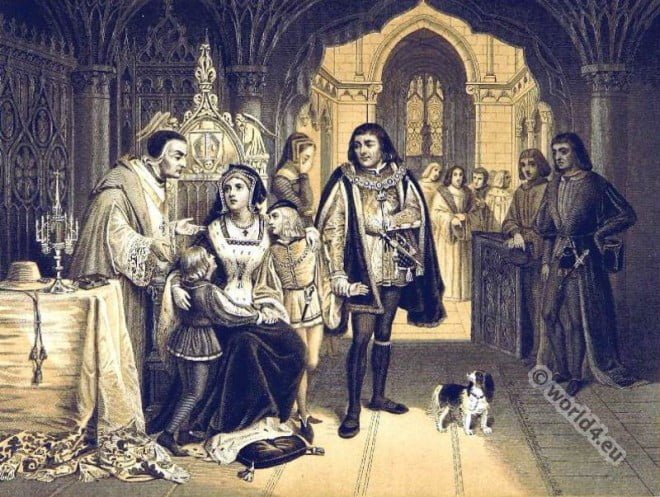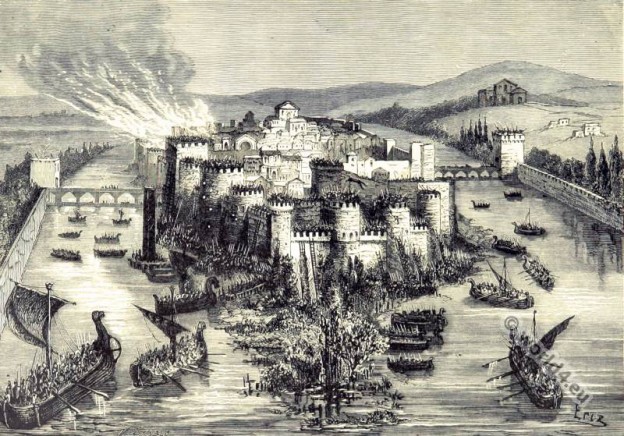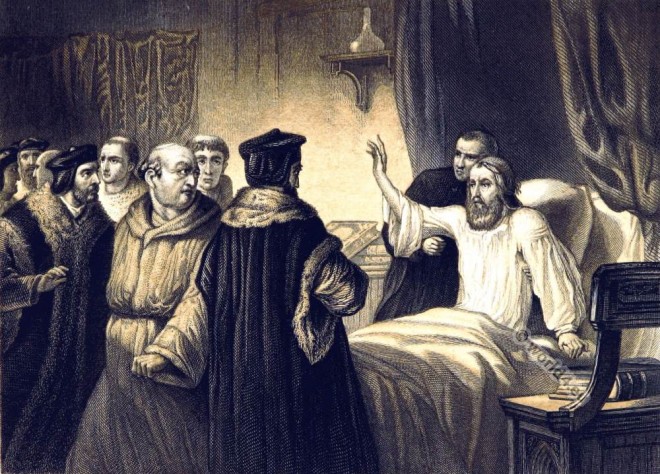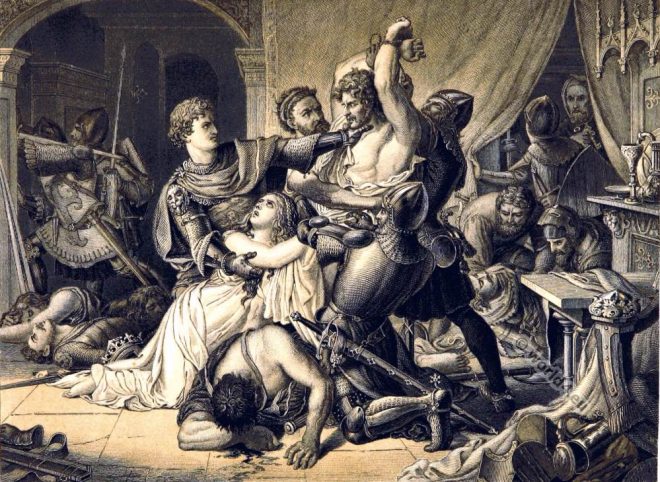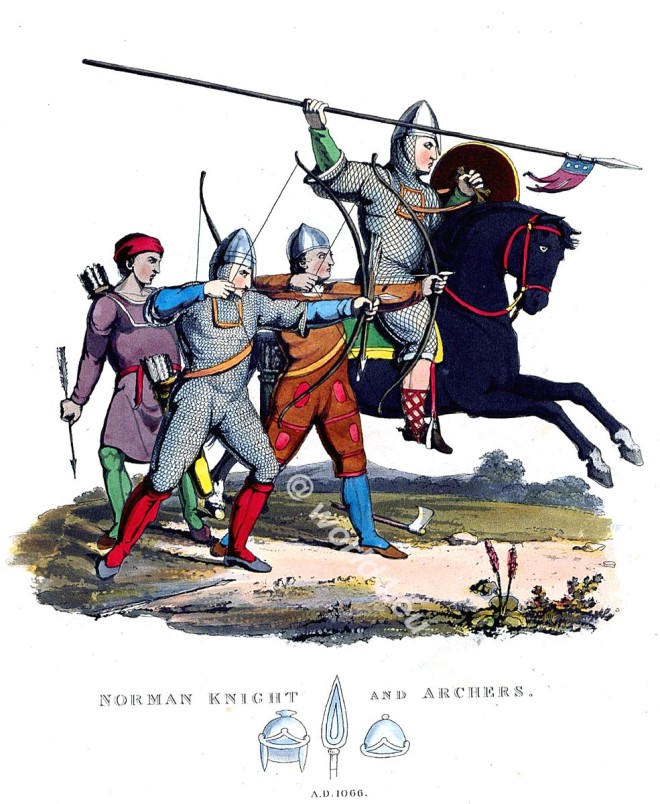Charles the Fat, Charles III, Carolingian Emperor encamped under the walls of Paris without daring to fight the Normans.
Category: Middle Ages
Middle Ages costumes and fashion. Period between 700 to 15th century. Style of Byzantine, Carolingian, Romanesque, Gothic and Renaissance.
Mary of Burgundy was the only child of Duke Charles the Bold.
Mary of Burgundy became Duchess of Burgundy after the death of her father Duke Charles the Bold in January 1477.
King Richard III, last British monarch of the House of Plantagenet.
Richard III was from 1483 until his death at the Battle of Bosworth King of England. He was the last British monarch of the House of Plantagenet and also the last, who died on a battlefield.
Paris, Norman viking invasion in 845.
Siege and attack on Paris by Vikings. Invasion des Normands en 845.
Jacques de Molay. Last Grand Master of the Knights Templar.
Jacques de Molay was the last Grand Master of the Order of the Temple. Jacques de Molay was executed at the stake in 1314.
Merovingian costume of a 5th century Frankish warrior.
Costume d’un guerrier franc du 5ème siècle.
John Wycliffe (1330-1384) and the Dawn of the Reformation.
John Wyclif, also Wicklyf, Wicliffe, Wiclef, Wycliff, Wycliffe, called Doctor evangelicus, was an English philosopher, theologian and church reformer.
Roger Mortimer, 1st Earl of March. English magnate, military and rebel.
Roger Mortimer, 1st Earl of March was an English magnate, military and rebel. After the fall of King Edward II in 1326, he was the real regent of England until he himself was overthrown and executed in 1330.
The Battle of Hastings. The Norman Conquest, 11th c.
This important battle was fought about nine miles from Hastings, in Sussex, upon the 14th day of October, being Saturday, the year of our Lord 1066.
Alfred the Great. King of the West Saxons. The first English king.
Alfred was not called “the Great” until the Reformation in the 16th century. He is the only king in English history to have received this byname.



